|
Making Vinegar with
|
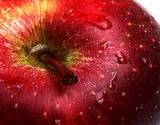 | 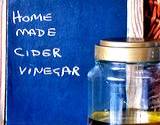 | 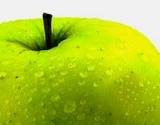 |
When the sweet apple juice has been collected, it is allowed to age, sealed tightly away from the air. Natural sugars are fermented to produce alcohol. This "hard" cider is then allowed to ferment once again, while left open to the air. This time, the alcohol changes to acid.
Vinegar can be made from any liquid containing sugar, if there is enough sugar. Apple juice is one of the oldest fluids used to for vinegar making, but grape and date palm use goes back thousands of years. Other popular vinegar sources are: molasses, sorghum, berries, melons, coconuts, honey, maple syrup, potatoes, beets, grains, bananas, and even whey.
Wine vinegar has many of the same nutritional benefits as apple cider vinegar. After all, it begins with naturally ripe, vitamin and mineral packed fruit. Wine vinegar will vary in color, depending on whether it was made from red or what whine. Vinegar's flavor, strength, depends on what it is made from. Sometimes "vinegar" is concocted from acetic acid (made from wood), colored with caramel, and then called vinegar. This is incorrect (and illegal) labeling. Acetic acid does not have the food value or aroma of genuine vinegar.
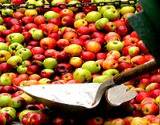 | 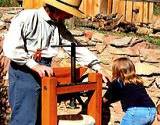 | 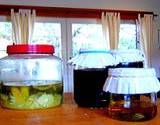 |
How to Make Vinegar
Tips and Apple Cider Vinegar Recipe
There are as many ways for making Vinegar as there are apples, kinds of fruit, and people. If you have never tackled the operation, you may want to begin the first with the apple cider vinegar recipe below. Then experiment some of the other ways to make vinegar.
Making vinegar requires two separate, distinct fermentations. The first called alcoholic (or vinous) changes natural sugars to alcohol. The second, called acid (or acetic) changes alcohol to acetic acid. It is important that the first fermenting be completely finished before the second is begun.
- Begin by making a good, tart cider. Combine sweet apples for aroma, tart ones for body, and a few crab apples for luck. The more sweet apples you use the stronger the vinegar will be. This is because the high sugar content of sweet apples produces more alcohol to change into acid. The more tart apples in the mix, the sharper the flavor will be.
- Chop the apples and when they turn golden brown, crush them in a cider press. Collect the cider in a glass jug. Never use store bought apple pasteurized, and so it will not ferment properly!
- Next, cap the cider jug with a small balloon. It will expand as carbon dioxide is released, while keeping air away from the mix. When the sugar is all changed to alcohol, it becomes hard cider. This takes 1 to 6 weeks, depending on the temperature and the sugar content of the apples used to make the cider.
- It is not necessary to add yeast, as wild yeasts are always on apples surfaces and in the air. If a grey foam forms on the top of the cider, it is excess yeast, and is harmless. Just skim it off.
- Finally, pour the hard cider into wide crock, so there is a larger surface area than in a jug. Put a cloth over the top to let in air, while keeping out dust and bugs. Vinegar will be created in a few months.
Wild spores floating in the air will start fermenting process, but adding mother-of-vinegar to cider will hurry the conversion along. Simply smear a slice of toast with mother and lay it gently on the surface of the cider. Making vinegar works best if the ingredients are kept at around 80 degrees. If the temperature gets much higher, the bacteria needed for fermenting is killed. If the temperature gets much cooler than 80 degrees, the wild spores become dormant.
Caution: Mother-of-vinegar (it starts the second fermentation) must not get into the liquid until practically all the sugar has been converted to alcohol.
The making vinegar bacterium is present wherever there is air. This is why any wine, which is spilled at a winery, must be mopped up at once. Bacteria could get started in the wine and source it all! If a winery makes both wine and vinegar, separate rooms are used for each. And, barrels from vinegar making are never used for storing wine.
As you can see making vinegar isn't as complicated as you imagined. Although, it is time consuming. Once you master how to make vinegar with the easy step by step formula you'll be ready to move on to the more exotic homemade vinegars.
Click on this link to read about the Benefits of Apple Cider Vinegar and the recipe for the famous Apple Cider Vinegar and Honey Tonic.
DISCLAIMER:
The statements made here have not been approved by the Food and Drug Administration. These statements are not intended to diagnose, treat or cure or prevent any disease. This notice is required by the Federal Food, Drug and Cosmetic Act.
Return from Making Vinegar to Grandma's Vinegar Wisdom
Return to Grandma's Wisdom Home





